 MANUFACTURERS, IMPORTERS, AND RETAILERS. L-O |
||
|
References: To produce this extensive list the following sources were consulted: Encyclopaedia of the Magic Lantern. The Magic Lantern Society, London, England, 2001. Van Toverlantaarn tot Kinematograaf. Vera Tietjens-Schuurman. Stichting Peter Bonnet Museum, Rottevalle, Friesland, the Netherlands, 1979. Laterna Magica, Zauberwelt und Faszination des optischen Spielzeugs. Ernst Hrabalek. Keysers Sammlerbibliothek G.m.b.H., Regensburg, Germany, 1985. and others. |
||
 |
LANCASTER & Sons, J. The English optician James Lancaster established his business in Birmingham in 1835. The company were initially retailers and had no manufacturing facilities of their own but made use of sub-contractors for the assembly of their photographic equipment, especially enlarging lanterns. The firm became James Lancaster & Son around 1875. (1835-c. 1939) |
|
|
LANCASTER, GEORGE English lantern manufacturer, active in Manchester. (c.1873-c.1886) |
||
LANGENHEIM, WILLIAM and FREDERICK American lantern slide manufacturers. In 1840 Frederick emigrated to the USA from Germany, joining his brother William who had emigrated earlier and some years later they opened a portrait studio in Philadelphia. In 1846 they imported projection apparatus from Vienna and adapted it for episcopic projection of daguerreotype plates. The began to make glass transparencies and in 1850 they patented these glass plate albumen-process slides, calling them hyalotypes. After the 1851 Crystal Palace Exhibition where their slides were exhibited the sale of their slides gained momentum. In their 1861 catalogue they are calling themselves the American Stereoscopic Company. After Williams death in 1874 the business was sold on to Caspar W. Briggs. |
||
LAPIERRE French family of lantern, slide and cinematograph manufacturers. In 1848 Auguste Lapierre set up a small-scale metal workshop in Paris, specialising in toy lanterns. In 1860 Lapierre filed a patent for a method of stamping out plate metal that enabled him to produce at a cheaper rate than his principal rival in this trade, Louis Aubert. Soon he became the leading manufacturer of toy lanterns in France. His slides, initially hand-painted, but later mass produced, took over the French slide market too. These slides are easily distinguished by their green paper binding. After the retirement of his father, Edouard Virgile Lapierre launched new designs of lanterns, like the Lampadophore and the Luciphone, which combined a lantern and a phonograph in the same casing. He took over control of his rival Aubert and moved his workshops into the former Aubert premises. In 1902 the company was transformed into Lapierre Frères et Cie, a partnership between Edouard and his two sons Maurice and René Lapierre. However the sons were less successful than their father and were obliged to amalgamate with the photographic manufacturer Jules Demaria, forming the limited company Société Anonyme des Etablissements Demaria-Lapierre in 1908. Later on, in 1921 René Lapierre founded a new company that was still producing 9.5 mm film projectors as late as the 1950s. (See also: Magic Lanterns Lapierre) |
||
LAVERNE, ARTHUR LÉON Around 1877 the French lantern manufacturer Laverne took over the business of two optical instrument makers, Albert Gasc and Alphonse Charconnet. He became the appointed supplier for the Ligue française de l'Enseignement, a secular organisation which promoted lectures illustrated by lantern slides throughout France and became one of the most important lantern makers of the 1880s. In 1887 he formed a partnership with the optical and photographic dealers Clément and Gilmer. Three years later Laverne retired, leaving the business to Clément et Gilmer. (1877-1890) |
||
LEACH, WILLIAM English microscopic projection experimenter who devised the Leach lantern microscope that could be used both for projecting microscopic objects on to a screen and for projecting them directly on to a plate in a camera. A commercial version of the instrument was advertised in 1894 by W.I. Chadwick. |
||
LECHNER, R. Austrian photographic manufacturer and supplier. In 1816 the firm was founded in Vienna as scientific instrument makers; from 1885 they produced photographic apparatus. In 1885 Lechner introduced an improved stereopticon which would serve for the projection of dissolving views, as a photographic enlarger and even as a studio portrait camera. Trading as A. Lechner (Wilh. Müller) the firm became from 1888 the Austrian agent for Kodak camera's and films. By the start of the 20th century their projection lanterns dominated the Austrian school market. |
||
LEFÈVRE, HENRI-ALEXANDRE French engineer and magic lantern manufacturer. In 1861 Lefèvre filed a patent for a Lampadoscope, which could be placed on top of a domestic oil lamp and could be fitted with a circular slide carrier which rotated around the lantern body and carried twelve slides, and other patents describe a kind of episcope. The bi-lampadaire lantern, with a body in the form of a box of hexagonal or elliptical cross-section, was made of cardboard (for the cheaper models) or hand-painted metal. (see also: Epidiascopes) They were mainly marketed by the Paris dealer Delagrave but also by other Paris dealers. (1860s-1870s) |
||
 |
LEHMANN, A. German founder of the Optische Anstalten A. Lehmann in Fürth, near Nuremberg in the late 1920s. The company produced some combination cinematograph magic lanterns under the trade name ALEF. In 1933 the registered office of the firm transferred to Berlin and there is no record of any activity after 1935. |
|
LEHMANN UND KNETSCH German supplier of projection lanterns, Neudorfstrasse 39, Breslau. |
||
LEJEUNE & PERKEN British manufacturers of photographic equipment, optical and other scientific instruments, established in 1852 in London. The company made magic lanterns under the Optimus trade mark. From 1887 the firm was conducted under the name Perken, Son & Rayment. (See also: Magic Lanterns, Perken, Son & Rayment) |
||
LEMAIRE, JACQUES and PIERRE French makers of optical instruments, including magic lanterns. Father and son Lemaire ran one of the most successful optical instrument workshops in France over a period of a hundred years. (1650-1750) |
||
LEREBOURS French family of optical instrument makers. Noël Jean Lerebours set up as an optical instrument maker in Paris in 1789. His catalogue of 1809 offered ordinary magic lanterns, painted slides and Phantasmascopes or improved magic lanterns intended for the effects of the Phantasmagoria. Later the business was taken over by his son Noël Marie Paymal, who was from 1845 onwards in partnership with Marc Secretan. After his death in 1855 Secretan took over the business. |
||
LEROY FILS, J. French opticians. A metal plate on one of their lanterns reads: " Maison fondée en 1858, J. LEROY FILS, opticien, 58 Faubourg Poissonnière, PARIS". |
||
LETELLIER French optical instrument maker and dealer, selling among other things camera obscuras, anamorphic mirrors and magic lanterns. |
||
LEVI & Co., JOS. English slide and lantern manufacturer and dealer, trading under the name Leviathan. |
||
LEVIATHAN Trade mark of the opticians Jos. Levi & Co., London. The company produced slide sets on a wholesale basis and dealt only with trade customers. Their slide subjects were mainly comic, religious or temperance narratives and only a few set a year were produced. Among the lanterns they produced was the Leviathan Automatic and Science Lantern. In 1898 they became the sole British agents for the French slide dealers Levy et Cie and their Ferrier lantern slides. (1890s) |
||
LEVI, JONES & Co. The English company of Samuel J. Levi and Alexander S. Jones produced the Matagraph film projector (1898). |
||
LEVY et Cie, JULES Publishers of images and successors to the firm founded in 1859 by Claude-Marie Ferrier and his son Jacques-Alexandre, in partnership with Charles Soulier, which produced fine stereo transparencies and lantern slides. From 1873 selections from their topographical slides were distributed in the USA by the Benerman & Wilson Lantern Slide Company. |
||
LIESEGANG German family involved in the manufacture, development and sales of lanterns, slides and photographic apparatus. The firm of Ed. Liesegang was founded by Friedrich Wilhelm Eduard Liesegang in Wuppertal (at the time called Elberfeld). After his father's death in 1871 his son Johann Paul Eduard took over the firm and transferred it to Düsseldorf were he started to make projecting apparatus and sell a wide range of magic lantern slides. After his death his third son James managed the firm while his two other sons became director of some departments. The company still exists nowadays. (1854-....) |
||
LILLEY & Co, M.C. American manufacturer and retailer of 'Military and Society Goods', including slide projectors, based in Columbus, Ohio. The company sold a variety of 'lodge' items, probably their definition of 'Society Goods'. (c. 1880s) |
||
LINNEL, JOSEPH English optician who took over the business from James Ayscough. |
||
 |
LIZARS, J. Scottish optical equipment, magic lantern and slide dealer, who established his business in Glasgow, in 1830. By the 1890s Lizars was one of the largest lantern dealers in Scotland and the business continued into the 1900s as a family concern, perhaps managed by Lizars' son from some point. It's not clear whether the lanterns sold by the company under their own brand were manufactured by Lizars themselves. (1830-1900s) |
|
LM Trademark of the German manufacturer Leonard Müller. |
||
LOCKE, CHARLES WOOLNOUGH British lanternist and photographer who started manufacturing magic lantern by joining D. Noakes & Son as a partner, supervising lantern and slide production. In 1895 he founded his own business in London, manufacturing magic lanterns and accessories on the premises (Motto: High Efficiency and No misrepresentation). |
||
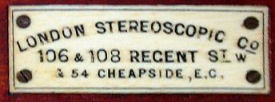 |
LONDON STEREOSCOPIC COMPANY English photographic suppliers, founded in 1854 by George Swan Nottage and John Howard Kennard. The company occupied many addresses in London and underwent several minor name changes. Originally selling only stereoscopic materials, they soon expanded and had a specialised lantern department selling lanterns, slides and accessories. (1854-1920s) |
|
LONG, CHARLES A. Writer of books on photography and one of the founders of Bland & Long. |
||
LOSSEAU, G. German manufacturer of dissolving view lanterns in Hamburg, active in the 1870s. |
||
LOYD, WILLIAM An American who made stereoscopes in the late 1850s and was sometimes involved in the business ventures of the brothers Langenheim. He also made hand-painted transparencies for the magic lantern. |
||
LUBIN, SIEGMUND Optician, lantern maker and film pioneer who emigrated in the mid 1870s from Germany to the USA where he settled as an oculist and soon after was offering a full range of projection apparatus, including magic lanterns, moving pictures and lantern slides. (c. 1875-1917) |
||
 Catalogue of Stereopticons Magic Lanterns Moving Picture Machines and Accessories, November 1905. T.H. McAllister Manufacturing Optician, 84 pages. |
McALLISTER Leading American family of optical lantern manufacturers. In 1775 John McAllister emigrated to the USA from Scotland. He worked as a house carpenter, made whips and walking sticks, sold spectacles and optical goods before he opened an enlarged optical business in Philadelphia. From 1798 to 1811 the business trades as McAllister & Mattews, then as McAllister & Son. From 1830 the firm traded under the name John McAllister & Co. and possible that was also the start of their work with magic lanterns. By 1846 they were a leading American dealer in magic lanterns and slides. Some ten years later the name changed to McAlister & Brother when John's grandsons William and Thomas Hamilton McAllister took over the management. In the 1860s they further expanded the photographic department and started to sell a wide selection of optical and mathematical instruments. In 1866 Thomas left Philadelphia to open an optical supplies business in New York. In the 1880s the company published a large catalogue of lanterns and slides, most of them imported from France and Britain; the toy lanterns probably from Germany. The company offered a biunial Metropolitan model and later also triunial International Stereopticons. From 1875 the firm also offered lantern slides; among them the slides of York & Son, London. The Philadelphia firm traded under the name W.Y. McAllister. In 1876 William sold the lantern business to the company's foreman, Charles T. Milligan, who continued in the lantern trade until 1900. After the death of his father in 1898, C.W. McAllister became the new director of the firm and he was later joined by L.A. McAllister, another member of the family. From the early 1900s the New York firm gradually concentrated on professional lanterns and moving picture machines. Under the trade name McAllister-Keller Co. Inc., from 1917, the firm continued until 1942. (See also: Magic Lanterns McAllister) |
|
McALLISTER, W. MITCHELL Member of the well-known McAllister family who ran a short-lived independent firm in Philadelphia from 1874. He manufactured the stereopticon lantern designs of Albert G. Buzby. |
||
 |
McINTOSH BATTERY & OPTICAL COMPANY American lantern and slide manufacturers, founded in the 1880s by the Civil War physician Dr Lyman D. McIntosh. The company, in later years trading as the McIntosh Stereopticon Company, manufactured medical devices and a wide range of sciopticon lanterns and school lanterns. Among their models a lantern mounted on two horizontal rods that included a projecting microscope, a lightweight portable sciopticon and a metal housed triunial lantern, The Royal Chicago. They also offered gas-making apparatus, lantern accessories and slides. (1880s-1930s) |
|
McINTOSH STEREOPTICON COMPANY See: McIntosh Battery & Optical Company. |
||
MAGNY, ALEXIS French Optician, Paris. He specialised in microscopes and probably made also magic lanterns. (c. 1770) |
||
 |
MAISON DE LA BONNE PRESSE French Roman Catholic evangelising publisher in the late 19th to early 20th century under the direction of Paul Feron-Vrau. It published various religious periodicals and from 1896 it also supplied projection equipment and materials, to oppose the secular propaganda then being circulated by other French institutions. In 1905, 462 lanterns and 67,513 slides were sold; three years later this had risen to 1,4505 lanterns and 183,646 slides. Some later projectors sold under the Bonne Press brand are manufactured by Gaston Guilbert and Continsouza. |
|
MALDEN, BENJAMIN, J. 'Professor' Benjamin Malden was an English lantern designer and lecturer at the Royal Polytechnic Institution, London, whose name and reputation were often used by several manufacturers to advertised lanterns 'designed by' or 'as made for' Malden. Some examples are the Malden Triopticon: a triunial made by J.H. Steward and by T.J.Middleton, and some lanterns made by W.C. Hughes. (c.1870s-1899) |
||
MALLET French slide maker and painter. His 'paintings for the phantasmagoria' are bearing his signature. (1860s) |
||
MANASSE, L. American optician who published an 'illustrated catalogue of Sciopticons, stereopticons, magic lanterns and views, mechanical novelties etc. manufactured and imported by L. Manasse'. |
||
MANN, JAMES English optician who sold magic lanterns. The business eventually became Mann & Ayscough. (1687-1718) |
||
MARCY, LORENZO J. American magic lantern manufacturer in Philadelphia, inventor of the Sciopticon lantern. The sciopticon was a popular magic lantern that was divided into two chambers, one for the lamp and the other for the flame, ensuring that the lamp remained cool. Beside that there were some other important improvements. (jaren 1860-jaren 1880) |
||
MARTIN, PAUL Photographer and lantern slide maker, born in France and moved to London in 1872. Martin started with photographing London by means of a Facile detective camera, recording the every day life of the street. He was awarded the Royal Photographic Society's Royal Medal in 1896. In 1899 he set up a photographic firm in partnership with H.G. Dorrett as Dorret & Martin. Over 600 slides by Paul Martin are known, as well as a lot of negatives and paper prints. |
||
MASON & Co., GEORGE Scottish manufacturers of photographic and optical equipment in Glasgow. In 1870 George Mason took over the business of his employer John Spencer. The firm had its own manufacturing facility and also bought in magic lanterns and other optical equipment for re-sale. |
||
MASON, R.G. British supplier of a Lantern Microscope attachment. (c. 1894) |
||
MASSIOT, GASTON French lantern manufacturer who took over the business of Alfred Molteni, in partnership with his father-in-law Arthur Radiguet. After Radiguet's death in 1904 he subsequently took sole control of the business. (1900s) |
||
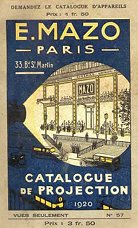 |
MAZO, ELIE XAVIER French publisher and lantern and slide manufacturer who appeared in Paris in 1892. By 1896 his shop offered a large selection of various magic lanterns for use at home and professional, as well as 10,000 monochrome and 5,000 coloured slides. His slide hire service, launched in 1897, extended throughout the whole of France. Their single (for example the Hélios), biunial and triunial lanterns were of high quality in terms of their optics and illumination. One of his relatives, Gaston Mazo, also worked for his company and was the author of a number of technical books on the lantern. (1890s-1910s) |
|
M.D. Trademark of Max Dannhorn, Nuremberg. |
||
MEDLAND, JOHN BRANDON English manufacturer of magic lanterns located in London and producer of the Pentaphane lantern, which was claimed to be the original five-wick lantern. |
||
 |
MERKELBACH The Dutch firm Merkelbach & Co. was founded in 1874 by J.W. Merkelbach as a department store selling fancy goods and toys at the Nieuwendijk in Amsterdam. When they started to make their own 'scientific toys', like magic lanterns and steam engines, the toy department moved to the Damrak 89. In 1911 the business moved to the Kalverstraat were it stayed until the end of the 20th century. (See also: Some humorous lantern slides for the little princess.) |
|
MESSTER, OSKAR German manufacturer of film recording and projecting apparatus. In 1892 Oskar took over the business from his father who ran a shop in Berlin, selling optical instruments. Four years later he began to make his own film cameras and projectors. |
||
MICHELSON PHOTO & SLIDE Co. American manufacturer of 3 1/4 x 4 inch advertising slides, located in Shelbyville, Indiana. (c. 1920s) |
||
MIDDLETON, THOMAS J. English manufacturer and supplier of a wide range of lanterns, slides and photographic equipment in London. The firm called themselves 'Sole Maker of the Malden Tripple Lantern'. (c. 1870s) |
||
MIESSL Continued the firm of Ludwig Richter after his death in c. 1900. |
||
MILLIGAN, CHARLES T. American lantern and slide manufacturer, foreman at W.Y. McAllister (formerly McAllister & Brother), who bought the lantern part of the company from William Y. McAllister in 1876 and continued in business until at least 1900. |
||
 |
MILLIKIN, JOHN English scientific instrument maker and retailer who sold magic lanterns and lantern slides from other publishers including York and Valentine. From 1856 the firm became known as John Millikin & Co. and in 1860 became Millikin & Lawley. The company also sold musical boxes, advertised as being specially adapted for playing whilst showing their series of slides. (1838-c.1900) |
|
MITTELSTRASS, GEBRÜDER German photographic suppliers and magic lantern manufacturers in Magdeburg. The firm made dissolving view apparatus, episcopes and sciopticons with circulating water-cooler, and offered also unbreakable slides using a mica base instead of glass. (1860s- c. 1900s) |
||
MOKO Trade mark of Moses Kohnstam, German toy manufacturer and lantern dealer. Distributor for several Nuremberg manufacturers. |
||
MOLLIER, DEMAISON et DUCHEZ French company, founded in Paris in 1901. |
||
MOLLIER, ETIENNE-NOËL French lantern manufacturer and dealer who started as an employee of Marc Secretan, the successor to Lerebours of Paris and was one of the partners in the company Mollier, Demaison et Duchez. Mollier also was a partner in other companies and sold and made a wide range of projection lanterns. Among them equipment for advertising and projectors for dentists. (1901-1920s) |
||
MOLTENI or MOLTENO French family of lantern, slide and optical instrument makers. In 1782 B. Molteno (mind the O at the end!), an Italian in origin, opened a shop in Paris to deal in optical instruments. Apparently he was involved with the construction of Robbertson's Fastascope. (See also: Phantasmagoria) Later his sons François and Pierre Marie Joseph Molteni (now written with an I at the end) took over the business. Under the direction of François Marie Alfred Molteni (the great-grandson of the original Molteno) the Molteni company became the most famous projection equipment manufacturer in France. It was his designed and marketed new oxi-ether lamp that caused the disastrous cinematographic fire at the Paris Bazar de la Charité in 1897. Alfred Moltini was so deeply moved by the tragedy that he retired from the business in 1900 and sold the company to Radiguet and Massiot. (1782-1900) |
||
MOORHOUSE, Rev. M.B. English clergyman and author who created a lot of verses and other texts for which Bamforth & Co. made accompanying Life Model slide sets. |
||
MORGAN, FRANK WRIGHT English retailer of lanterns and lantern slides, active in Manchester. (c.1863-c.1875) |
||
|
|
MÜLLER, CARL Austrian magic lantern manufacturer in Vienna, founded in 1848 as Etablissement optischer Artikel Carl Müller. |
|
MÜLLER, I. German magic lantern maker, in partnership with L. Neussner in Nuremberg. In 1862 Müller and Neussner took part in the International Exhibition in London, exhibiting among other items magic lanterns. Since then any trace of their production is missing. (c. 1860s) |
||
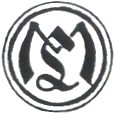 |
MÜLLER, LEONARD German manufacturer of toy magic lanterns and cinematographs, working in the neighbourhood of Nuremberg in the early 20th century. Trademark the entwined capitals L and M. |
|
MÜLLER & WETZIG German company that produced from around 1900 onwards photographic equipment and a small range of lanterns in Dresden. On many of their products there is the 'ARGO'-logo: the initials of the company-name "M" & "W" above and below the item name. |
||
MUSSCHENBROEK Dynasty of instrument makers from Leiden in the Netherlands which played an important role in the early scientific development of the magic lantern and also the development of slides incorporating moving elements. The firm reached the highest distinction under Jan van Musschenbroek, who constructed a magic lantern for the Dutch professor of physics at the University of Leiden, Willem Jacob ‘s Gravesande, about 1720. This lantern, now located in Leiden in the Museum Boerhaave is probably the oldest still existing magic lantern in the world. (See also: The oldest magic lantern in the world) |
||
NAIRNE, EDWARD Optical, philosophical and mathematical instrument maker in London, c. 1750. The firm, that sold 'Magick Lanterns', became Nairne & Blunt from c.1774 to 1793. |
||
NATIONAL CALCIUM LIGHT Co. American retailer in New York that sold 'calcium lights for all purposes' and wood-mounted slides. (late 19th century) |
||
NATIONAL PICTURES SERVICE American stereopticon and filmstrip projector manufacturers, Cincinnati, Ohio. Maker of the popular Great National Nr. 1 Stereopticon; the filmstrip version was provided with a water tank between the film-winding mechanism and the condenser lens to prevent overheating. (1900s) |
||
 |
NEGRETTI & ZAMBRA Enrico Angelo Lodovico Negretti and Joseph Warren Zambra were optical and meteorological instrument makers and manufacturers of magic lanterns and slides in London from 1850 to the mid-20th century. The firm took over the business of Newman & Son in 1860 and that of Bland & Long in 1864. |
|
NEGRETTI, HENRI Scientific instrument maker in London who took over the business of Pizzy & Negretti in 1845 and continued under the name Henri Negretti & Co. In 1850 the business name became Negretti & Zambra. |
||
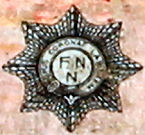 |
NEUMEYER, FRITZ Manufacturer of magic lanterns in Nuremberg, Germany. Founded in 1917. Fritz Neumeyer is first and foremost known as a co-founder of the Zündapp motorcycle factory (Zünder- und Apparatebau G.m.b.H."). The magic lanterns made under the trade mark FNN are rather rare and little known. The trade mark is a star shaped badge that has the initials F.N.N. in the centre and the Latin motto "OPUS CORONAT LABOREM" around the edge. |
|
NEUSSNER, L. Partner of the Nuremberg manufacturer I. Müller. |
||
NEWMAN & SON See: Negretti & Zambra. |
||
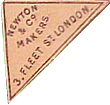  |
NEWTON & Co. English lantern and slide manufacturers and dealers in London. In the mid19th century William Edward and Frederic Newton founded a partnership dealing in magic lanterns and other optical and scientific equipment. In 1858 the business became a company known as Newton & Co. They became one of the most important British lantern and slide manufacturers, with a reputation for quality. By the 1900s their slide range was estimated at 150,000, covering every type of subject and some ten years later the Newton slide Catalogue was so large it was published in ten subject-based sections with a total of over 1,200 pages. Around 1912 they acquired the stock of other slide producers like G.W. Wilson and York & Son and marketed these slides under their original trade names. The company was still producing slide sets in the late 1930s; at the time mainly religious subjects. Shortly after the Second World War the business was taken over by the electrical equipment manufacturer AEI. (1850s-1940s) (See also: Magic lanterns Newton & Co.) |
|
NOAKES, DAVID W. English lanternist , active in Greenwich, who started by making his own equipment, resulting in setting up a small optical business as a sideline to his father's forage company, D. Noakes & Sons. From 1890 to 1897 he ran his own premises, but after his fathers retirement he returned to the family firm. Noakes relinquished his lantern business to G.P. Norman; after that the name of the company became Noakes & Norman. One of his lanterns was the quadruple Noakesoscope. |
||
NOAKES & NORMAN See: David W. Noakes. |
||
NOVELTY SLIDE COMPANY, The American slide merchant of Chicago and New York, offering slides of news events such as the Mississippi Flood of 1912. |
||
NORIS PROJEKTION GmbH Owned by Hans and Fritz Schaller, the company took over the factory of Ernst Plank in 1930, first under the name Ernst Plank KG Noris Produktion and after the Second World War as Noris Projektion GmbH. |
||
NORMAN G.P. Partner of David Noakes in the Noakes & Norman Company. |
||
NOTTAGE, GEORGE SWAN One of the two founders of the London Stereoscopic Company. |
||
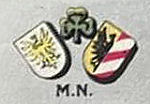 |
NÜSSLEIN, MICHAEL Manufacturer of magic lanterns in Nuremberg, Germany. Made magic lanterns of the Triumph or Triumpf model. |
|
OLDFIELD, J & R. English manufacturer's of 'Russian iron and Best Black Optical Lanterns' in Birmingham. (1890s) |
||
OLIVA, PIETRO Italian optician, whose 'Premiata Fabbrica de Oggetti d'Ottica (prize-winning optical equipment factory) was located in Milan. His catalogue offered a large selection of Lanterne Carrée and Lampascope lanterns in tin plate or lacquered finishes, along with slides for projection. (c.1875-c.1900) |
||
 |
OPTIMUS Trade name, original registered by Lejeune & Perken and taken over by its successor Perken, Son, & Rayment. The Optimus trade mark was applied to lanterns as well as an extensive range of photographic equipment. (See also: Magic Lanterns, Perken, Son & Rayment) |
|
OTTWAY, JOHN English opticians and brass turners, retailers and manufacturers of photographic equipment, including a triunial and several other types of magic lanterns, and lantern slides. |
||
 |
| |
©1997-2023 'de Luikerwaal' All rights reserved. Last update: 18-11-2023. |